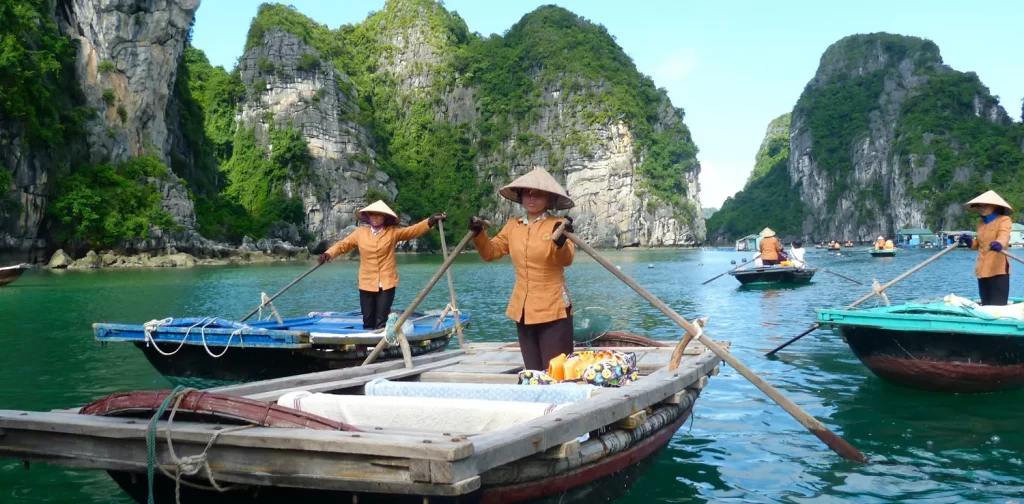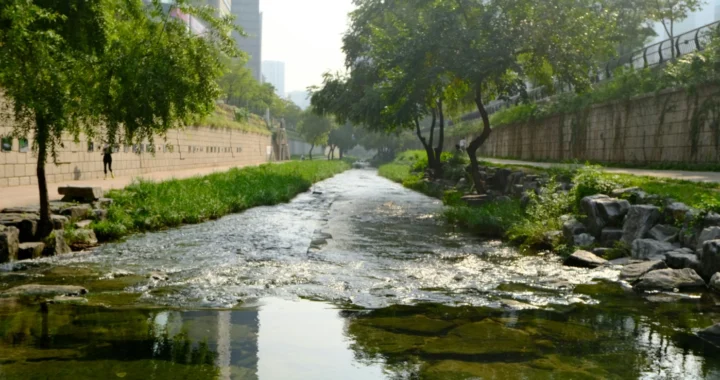Optimizing Vietnam’s Sea Potential with Blue Economy Scenarios

Photo by Gary Cacciatore on Unsplash
Oceans and seas make up 71% of the earth’s surface. However, they are slowly losing their ability to absorb carbon dioxide due to climate change and suffering from the exploitation of natural resources and unsustainable economic practices.
Vietnam is one of the countries blessed with a magnitude of coastline. If developed through sustainable practices, Vietnam’s coastlines and seas have the potential to support the country’s net-zero commitments. Recently, the nation has been tapping into blue economy scenarios to enhance its marine potential.
Vietnam’s ocean opportunities
The World Bank defines a blue economy as the “sustainable use of ocean resources for economic growth, improved livelihoods, and jobs while preserving the health of the ocean ecosystem.” It covers various aspects, namely renewable energies, tourism, fisheries, maritime transport, climate change, and waste management.
Vietnam’s coastline spans 3,260 kilometers; the economy of 28 coastal provinces and cities accounts for almost half of the nation’s gross domestic product (GDP). Such an important industry and resources need proper management to avoid water-related crises, especially in the light of rising sea levels. This is where the blue economy scenarios come into the picture.
Blue scenarios for six marine sectors
The UNDP collaborated with the Vietnam Administration of Seas and Islands (VASI) to publish a report titled Blue economy scenarios for Viet Nam.
The report offers several insights covering six sectors for blue economy scenarios:
- Fisheries and aquaculture
Despite promising numbers in 2019, the government has been limiting inshore fishing due to the decline of fishery resources. The blue scenario suggests reducing fisheries catch by 2% per year, maintaining aquaculture area, and improving management to reach a 3.5% productivity increase per year to foster sustainable fishing practices.
- Oil and gas
While the country’s gas production remains steady, the number of investments in oil & gas production is declining. The report recommends promoting energy-saving within oil & gas activities, enhancing the protection of the environment, and increasing participation in the emerging marine renewable energy production.
- Marine renewables
Vietnam has abundant marine energy resources, namely electricity generated from offshore winds, tides, waves, and ocean flows. However, the potential has yet to be fully explored. The report recommends a rapid expansion of marine renewables, achieving 10,000 MW by 2030.
- Tourism
Marine tourism takes up ⅔ of Vietnam’s tourism sector. The report recommends promoting 8-10% growth per year for international visitors and 5-6% per year for domestic tourists, reaching 1.6 million tourist beds with 65% occupancy, and embedding climate change impacts in tourism planning to increase tourism growth by 2030
- Maritime transport
In 2019, nearly 493 million tons of goods were transported by the sea. However, foreign shipping lines dominate about 90% of Vietnam’s international transport market share. The blue scenario’s goal is to increase maritime transport share from 20.6% to 22.84% by 2030.
A step towards sustainability
By implementing blue economy scenarios, Vietnam could improve the country’s overall GDP. Facilitating the marine economy will also enable Vietnam to realize Sustainable Development Goals (SDGs), including Goal 8 on decent work and economic growth and Goal 12 on responsible production and consumption. Eventually, the effort to pursue sustainability should encompass every possible sector to ensure that no one is left behind.
Editor: Nazalea Kusuma

Kresentia Madina
Madina is the Assistant Manager for Digital Publications at Green Network Asia. She graduated from Universitas Indonesia with a bachelor's degree in English Literature. She has three years of professional experience working on GNA international digital publications, programs, and partnerships particularly on social and cultural issues.


 Weaving the Thread Between the Last Elephant and the Floods in Sumatra
Weaving the Thread Between the Last Elephant and the Floods in Sumatra  Bringing Buried Rivers Back to Life Through Daylighting
Bringing Buried Rivers Back to Life Through Daylighting  Prescribing Beyond Profit for CEOs’ Anxiety
Prescribing Beyond Profit for CEOs’ Anxiety  An Interview with May Tan-Mullins, CEO and Provost of University of Reading Malaysia
An Interview with May Tan-Mullins, CEO and Provost of University of Reading Malaysia  An Interview with Eu Chin Fen, CEO of Frasers Hospitality
An Interview with Eu Chin Fen, CEO of Frasers Hospitality  The UK Government’s Funding Package Plan to Tackle Youth Unemployment
The UK Government’s Funding Package Plan to Tackle Youth Unemployment